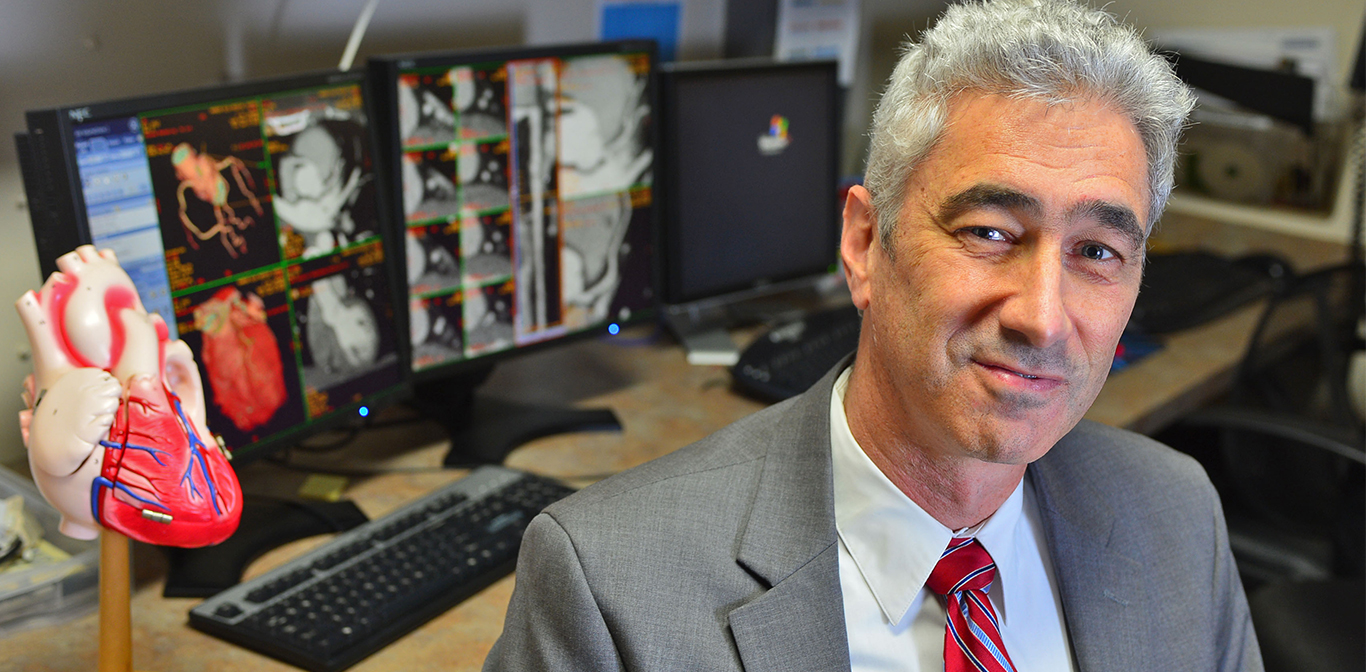New Hope for Improved Heart Disease Detection and Treatment in Type 2 Diabetics

Report Identifies Tools for Determining Risk and Prescribing Treatment
With approximately two-thirds of deaths among people with type 2 diabetes related to cardiovascular disease, a new report holds hope for improving the treatment of heart disease for one of the country’s and the world’s most at-risk populations.
The report by The Imaging Council of American College of Cardiology, which will be published Feb. 1 in the Journal of the American College of Cardiology: Cardiovascular Imaging, finds other tools, such as exercise testing or coronary calcium scanning could be useful in determining the level of risk of heart disease in people with type 2 diabetes. With this information, health care providers could match the intensity of therapy to the level of risk of heart disease in their patients with type 2 diabetes.
“By properly evaluating the level of coronary heart disease risk, physicians will know when to prescribe more aggressive and less aggressive treatment strategies for their patients,” said Matthew J. Budoff, MD, an LA BioMed lead researcher, Chair of the writing group for the Imaging Council and the corresponding author of the report. “While more recent data indicates the risk of coronary heart disease for people with type 2 diabetes is less than was previously believed, it is still critical for physicians to properly assess risk and provide the appropriate strategies of care.”
The report notes that several forms of testing can help physicians measure the risk of heart disease in patients with type 2 diabetes. Among these tests is exercise testing, in which patients exercise while attached to monitoring equipment. The report noted that this testing can detect “silent” ischemia, or reductions in the flow of blood to the heart, in patients with no signs of heart disease.
Coronary artery disease, which often leads to heart attacks, develops as a result of cholesterol plaque buildup that can calcify in the coronary arteries. This calcium can be detected by a cardiac computed tomographic scan (CT scan), which can help to identify the highest risk patients and lead to better treatments.
The report noted that 25% to 30% of people with type 2 diabetes are now considered to be at a low risk of coronary heart disease, based on the absence of coronary atherosclerosis, or plaque in the coronary arteries. The report’s authors note that future recommendations may call for screening patients with type 2 diabetes for calcium deposits and the following up with a functional study, in those with substantial calcium buildup, to determine if they are also suffering from ischemia. They also noted further study is needed to determine if this approach would lead to better outcomes.
Other authors of the study are: Paola Raggi, MD, Mazankowski Alberta Heart Institute, Department of Medicine, University of Alberta, Emondton, Alberta, Canada; George A. Beller, MD, Department of Medicine, University of Virginia, Charlottesville, VA; Daniel S. Berman, MD, Departments of Imaging and Medicine, Cedars-Sinai Medical Center and the Cedars-Sinai Heart Institute, Los Angeles, CA: Regina S. Druz, MD, Department of Cardiology, Hofstra North Shore-LIJ School of Medicine, Uniondale, NY; Shaista Malik, MD, PhD, Department of Medicine, University of California, Irvine; Vera H. Rigolin, MD, Department of Medicine/Division of Cardiology, Northwestern University Feinberg School of Medicine, Chicago, IL; William Guy Weigold, MD, Cardiology Division, MedStar Heart & Vascular Institute, MedStar Washington Hospital Center, Washington, D.C., and Prem Soman, MD, PhD, Division of Cardiology, University of Pittsburgh Medical Center, Pittsburgh, PA. Dr. Budoff receives grant support from General Electric. Dr. Soman has received grant funding and consultant fees from Astellas.
